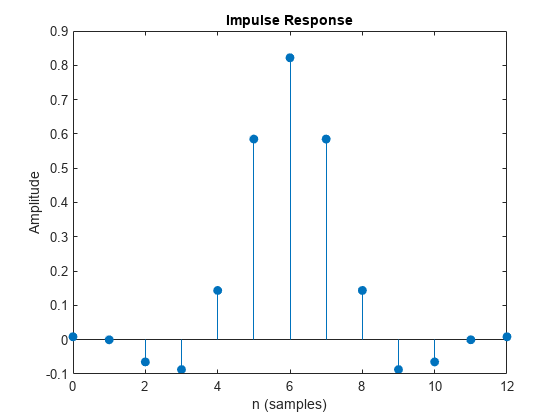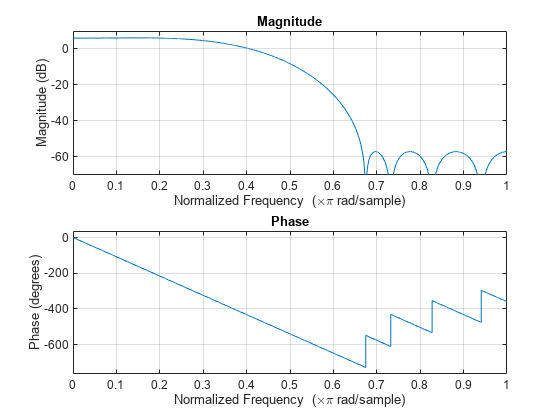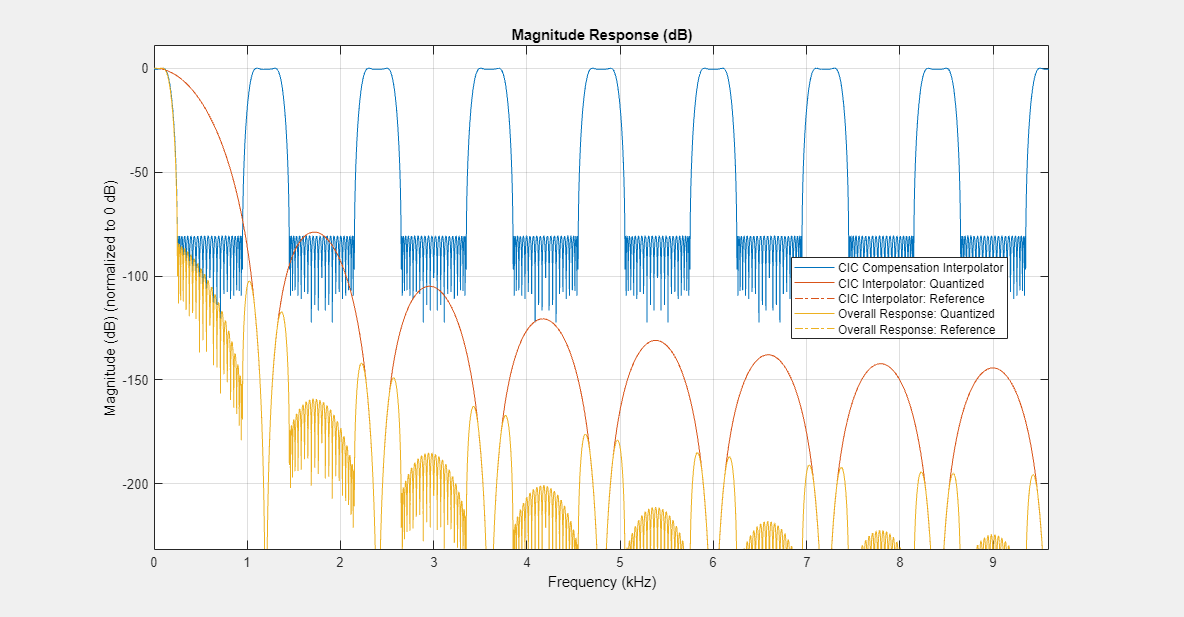dsp.CICCompensationInterpolator
Compensate for CIC interpolation filter using FIR interpolator
Description
You can compensate for the shortcomings of a CIC interpolator, namely its passband droop and wide transition region, by preceding it with a compensation interpolator. This System object™ lets you design and use such a filter.
To compensate for the shortcomings of a CIC filter using an FIR interpolator:
Create the
dsp.CICCompensationInterpolatorobject and set its properties.Call the object with arguments, as if it were a function.
To learn more about how System objects work, see What Are System Objects?
Creation
Syntax
Description
ciccompint = dsp.CICCompensationInterpolatorciccompint, that applies an FIR interpolator to each
channel of an input signal. Using the properties of the object, the interpolation filter
can be designed to compensate for a subsequent CIC filter.
ciccompint = dsp.CICCompensationInterpolator(interp)ciccompint, with the
InterpolationFactor property set to
interp.
ciccompint = dsp.CICCompensationInterpolator(cic)ciccompint, with the
CICRateChangeFactor, CICNumSections, and
CICDifferentialDelay properties specified in the
dsp.CICInterpolator
System object
cic.
ciccompint = dsp.CICCompensationInterpolator(cic,interp)ciccompint, with the
CICRateChangeFactor, CICNumSections, and
CICDifferentialDelay properties specified in the
dsp.CICInterpolator
System object
cic, and the InterpolationFactor property set to
interp.
ciccompint = dsp.CICCompensationInterpolator(___,Name=Value)CICRateChangeFactor as 8.
Properties
Usage
Syntax
Description
Input Arguments
Output Arguments
Object Functions
To use an object function, specify the
System object as the first input argument. For
example, to release system resources of a System object named obj, use
this syntax:
release(obj)
Examples
More About
Algorithms
The response of a CIC filter is given by:
R, D, and N are the rate change factor, the differential delay, and the number of sections in the CIC filter, respectively.
After decimation, the CIC response has the form:
The normalized version of this last response is the one that the CIC compensator needs to compensate. Hence, the passband response of the CIC compensator should take the following form:
where ωp is the passband frequency of the CIC compensation filter.
Notice that when ω/2R ≪ π, the previous equation for Hciccomp(ω) can be simplified using the fact that sin(x) ≅ x:
This previous equation is the inverse sinc approximation to the true inverse passband response of the CIC filter.
Extended Capabilities
Version History
Introduced in R2014bSee Also
Functions
freqz|freqzmr|filterAnalyzer|info|cost|coeffs|polyphase|outputDelay


